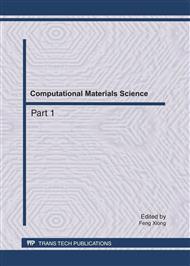p.1036
p.1040
p.1046
p.1050
p.1055
p.1061
p.1067
p.1073
p.1077
A Wormhole Attack Defense Strategy of WSN Based on Node Location Information
Abstract:
Wormhole attack is a kind of attack manner in WSN that does not need to crack network encryption key, which has great harm. Aiming at the characteristics of Wormhole attack, a wormhole attack defense strategy based on node location information was presented. The manner computed physical distance between two nodes through extraction of location information in the packets and compared it with stored threshold, so as to determine whether these packets come from normal communication range. WSN network modeling and simulation results based on OMNeT++ indicates that AODV protocol of defense strategy added sensor node location information can implement successfully defense.
Info:
Periodical:
Pages:
1055-1060
Citation:
Online since:
July 2011
Authors:
Price:
Сopyright:
© 2011 Trans Tech Publications Ltd. All Rights Reserved
Share:
Citation:


